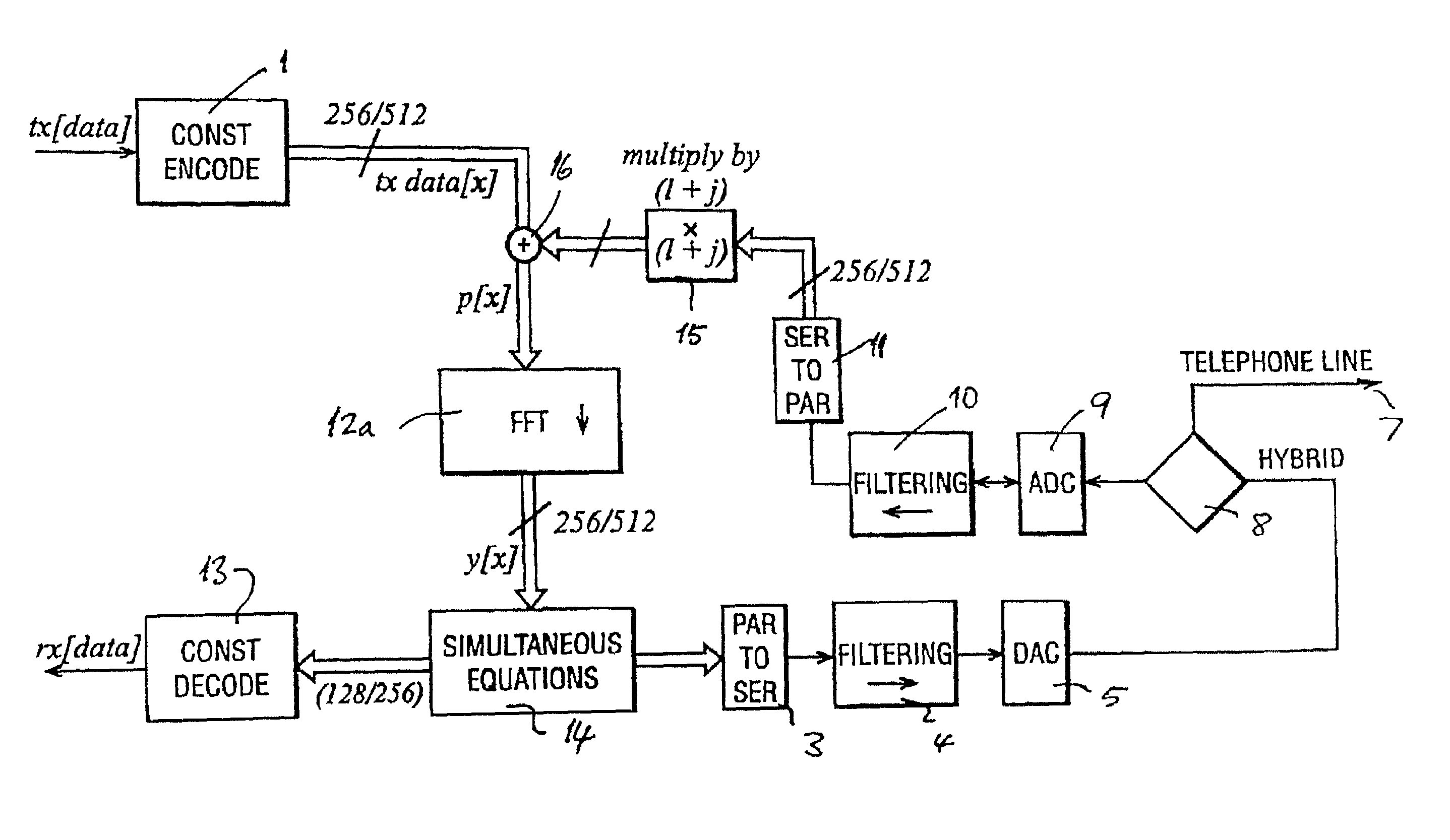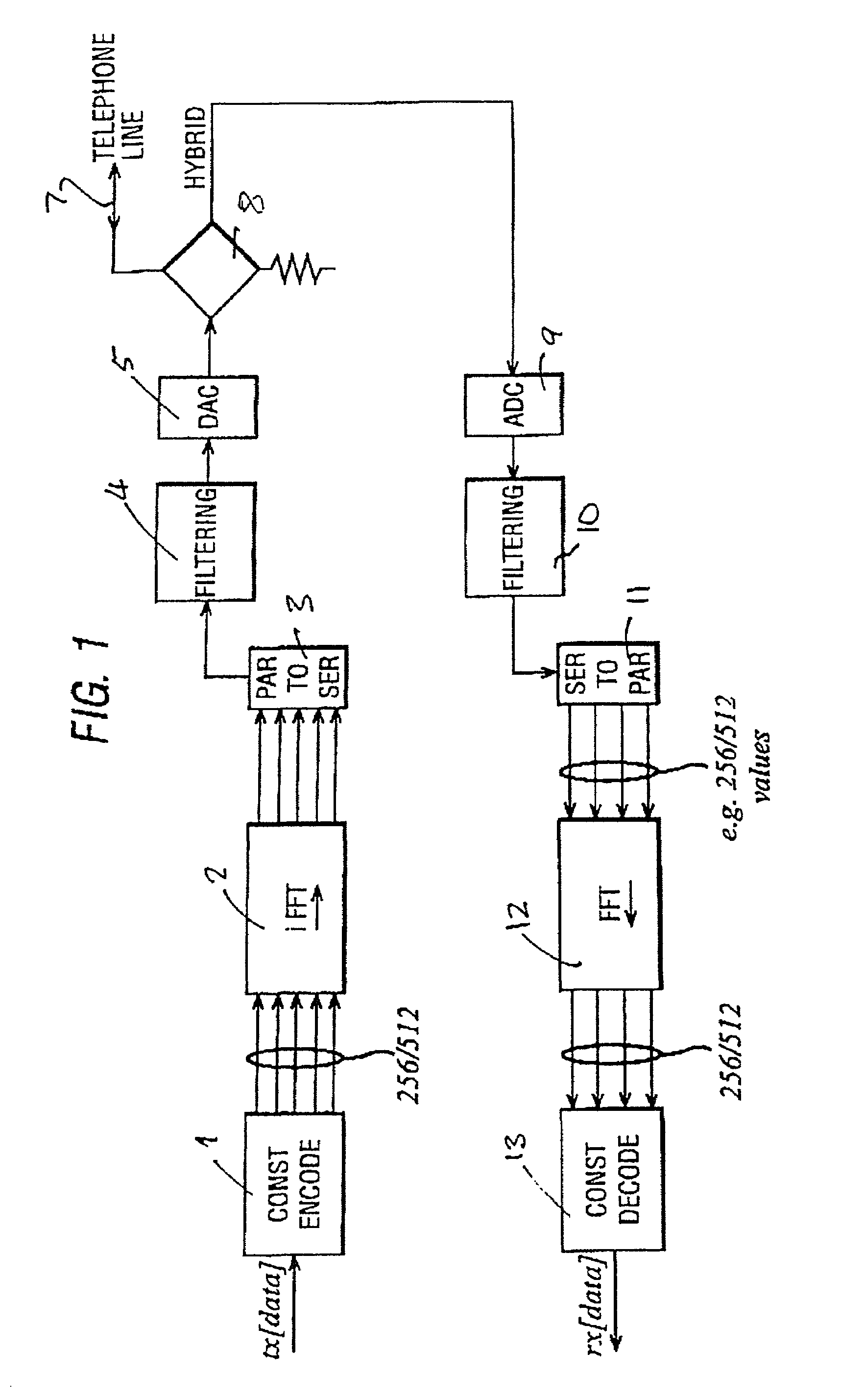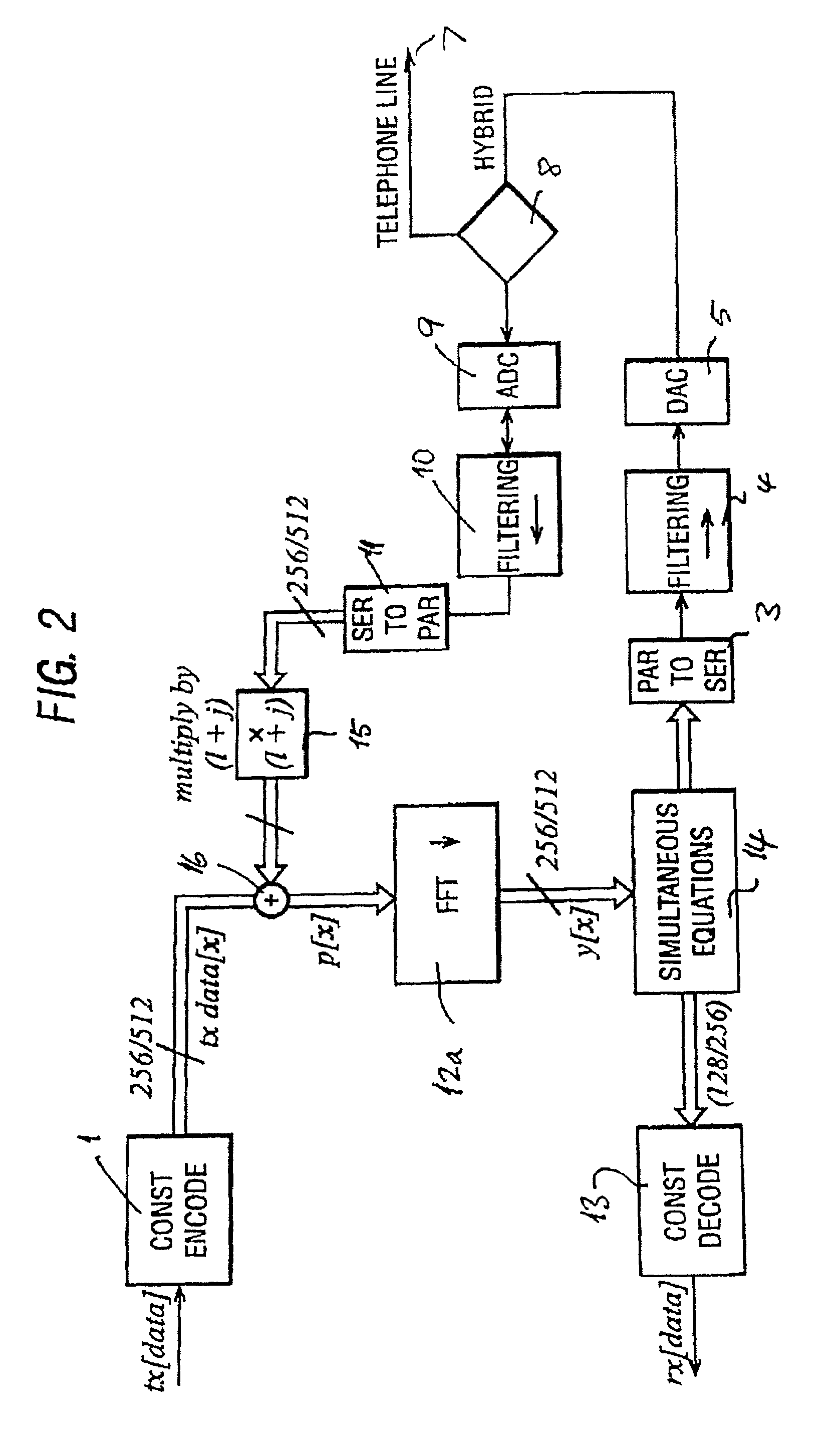Reduced complexity DMT/OFDM transceiver
a transceiver and reduced complexity technology, applied in multiplex communication, orthogonal multiplex, instruments, etc., can solve the problems of inability to accept additional delay and double the overall latency of data, and achieve the effect of simplifying the construction of the transceiver and compromising reliability
- Summary
- Abstract
- Description
- Claims
- Application Information
AI Technical Summary
Benefits of technology
Problems solved by technology
Method used
Image
Examples
Embodiment Construction
[0027]Referring to FIG. 1, this illustrates, in a much simplified form, a conventional xDSL modem where separate iFFt's are performed on transmission data and FFT's are performed on reception data.
[0028]An input transmitted sample stream tx data is processed to produce symbols for transmission on the telephone line 7. For example, variable-length sequences of bits (according to a table of channel bit allocations) are passed to QAM complex encoder 1 which then produces one amplitude pair per sequence of bits. The amplitude pairs are then processed by iFFT 2, and parallel to serial converter 3 which creates a sample stream at some multiple of the symbol rate. This is then upsampled in filtering stage 4 and passed to DAC 5 to produce symbols for transmission. Hybrid circuit 8 allows either transmission, or reception of symbols on line 7.
[0029]When symbols are received from the line 7, these are processed in order to reproduce a received data stream rx, For example, a sequence of receiv...
PUM
 Login to View More
Login to View More Abstract
Description
Claims
Application Information
 Login to View More
Login to View More - R&D
- Intellectual Property
- Life Sciences
- Materials
- Tech Scout
- Unparalleled Data Quality
- Higher Quality Content
- 60% Fewer Hallucinations
Browse by: Latest US Patents, China's latest patents, Technical Efficacy Thesaurus, Application Domain, Technology Topic, Popular Technical Reports.
© 2025 PatSnap. All rights reserved.Legal|Privacy policy|Modern Slavery Act Transparency Statement|Sitemap|About US| Contact US: help@patsnap.com



